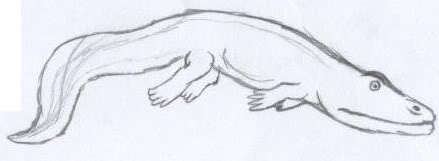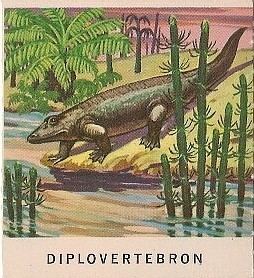Kingdom Animalia Suborder Embolomeri Rank Genus | Class Amphibia Phylum Chordata Order Anthracosauria | |
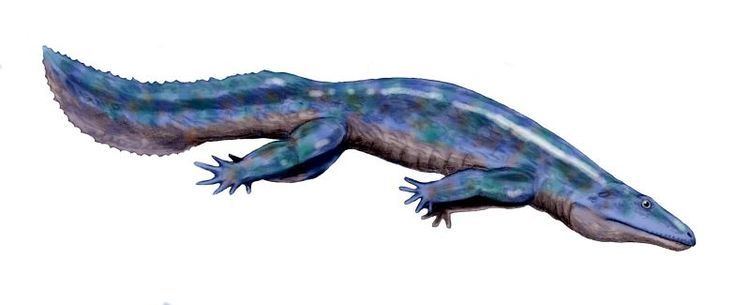 | ||
Family Eogyrinidae
Watson, 1929 Similar Pteroplax, Embolomeri, Gephyrostegus, Anthracosauria, Cricotus | ||
Diplovertebron is an extinct genus of Anthracosauria (Labyrinthodont) that lived in the Late Carboniferous period (Moscovian) (300 million years ago). Diplovertebron was a medium-size animal, 60 cm in length.
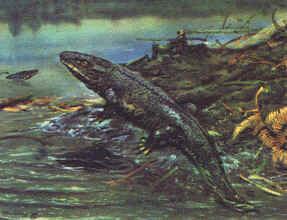
Its skull produced a tapering triangle, like a small-scale replica of a crocodile's skull. The otic notches in the posterior part of the skull, which are normally present in primitive amphibians, were very small in Diplovertebron, but the structure of the vertebrae was very primitive and the notochord persisted into adulthood. The limbs were sturdy, but lightly built and had five digits. The carpal or 'wrist' and tarsal or 'ankle' bones were cartilaginous, and did not ossify. The limbs were used mainly in water, where hydrostatic pressure reduced the weight of the body.
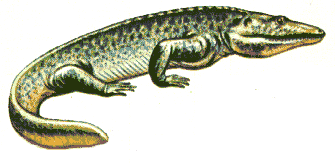
Diplovertebron punctatum inhabited European Carboniferous swamps (nowadays Czech Republic), where it caught fish and smaller amphibians. Another, closely related species, lived in the Pennsylvanian period in North America. Diplovertebron is an important link in evolution, because its body structure resembled that of a reptile.
